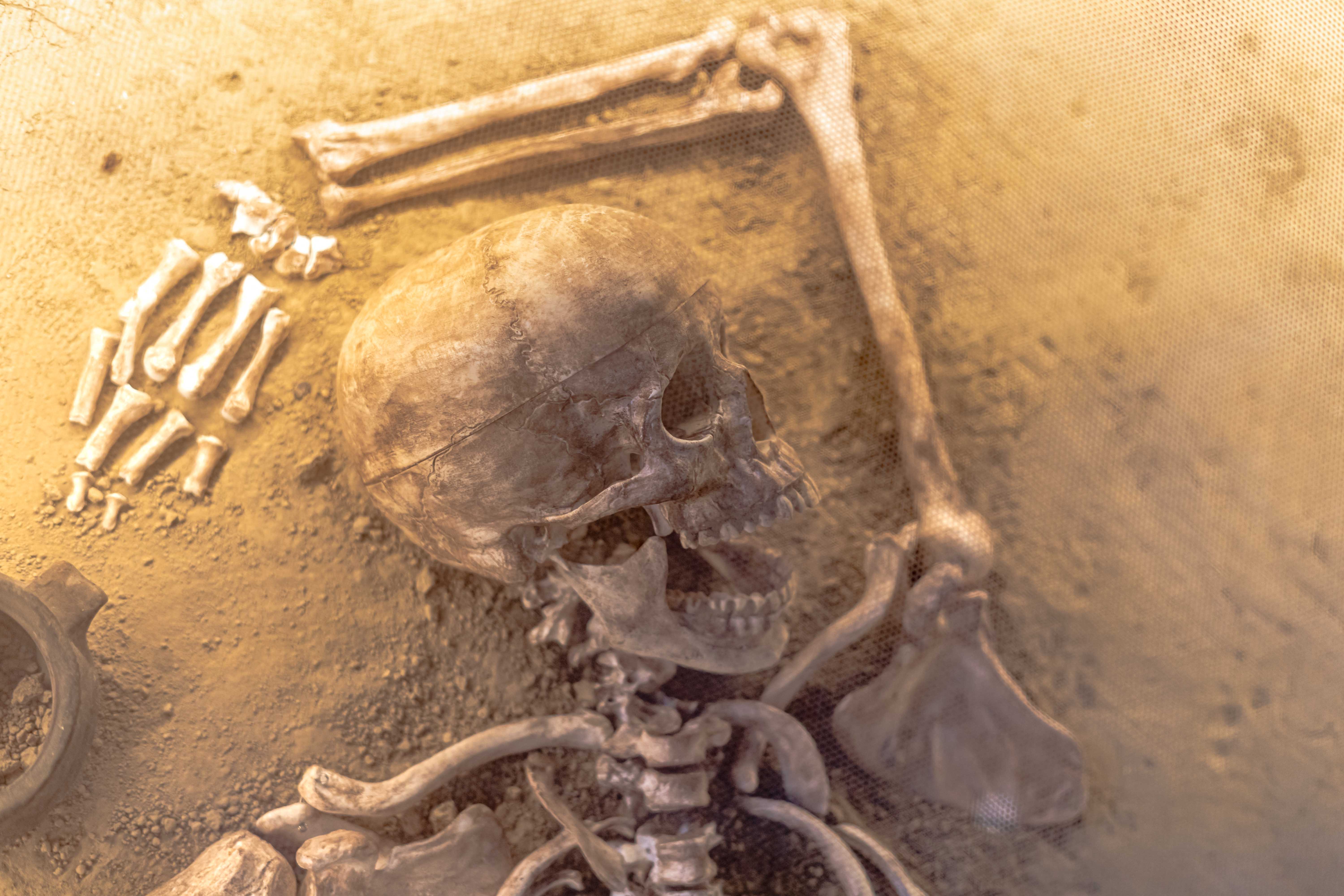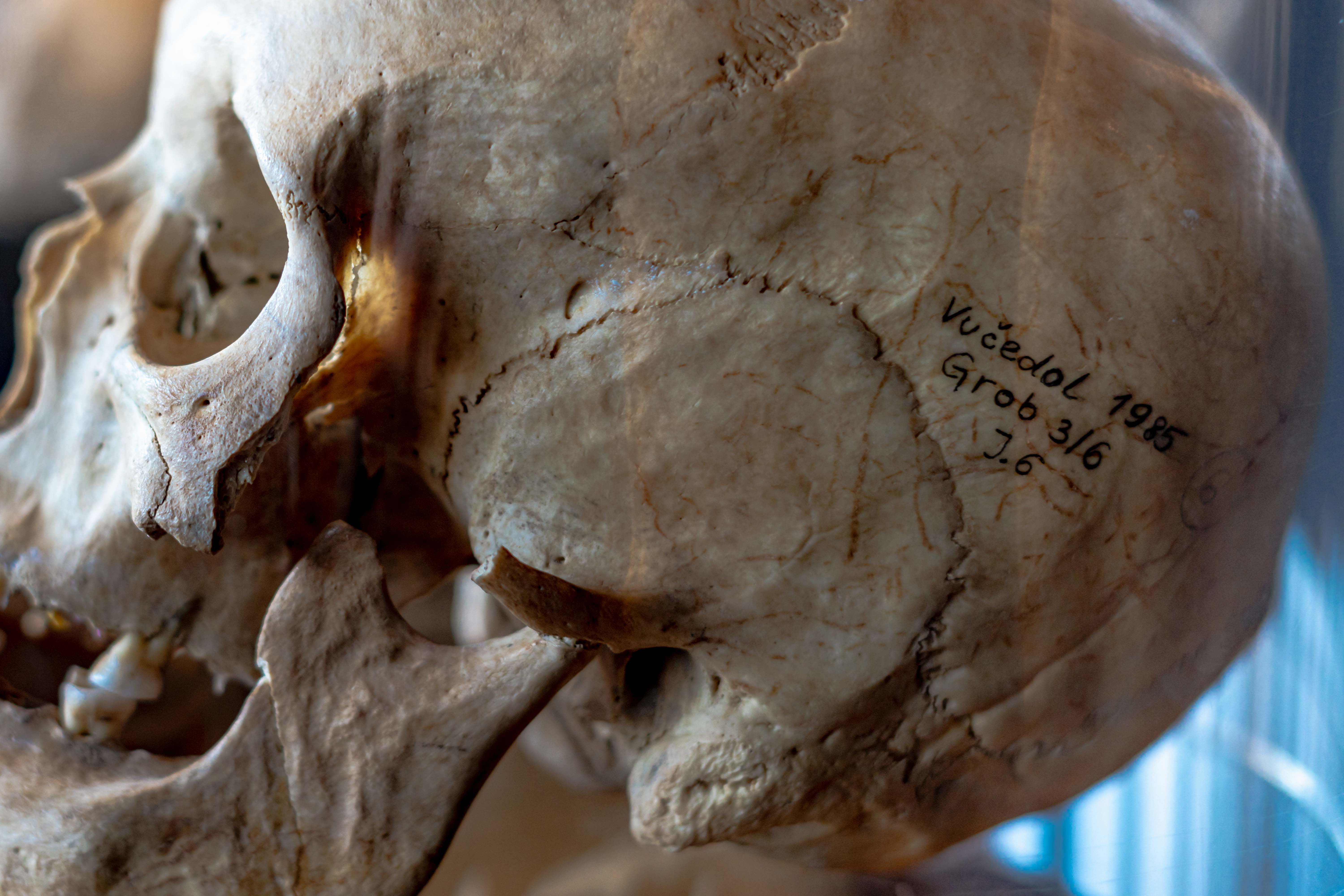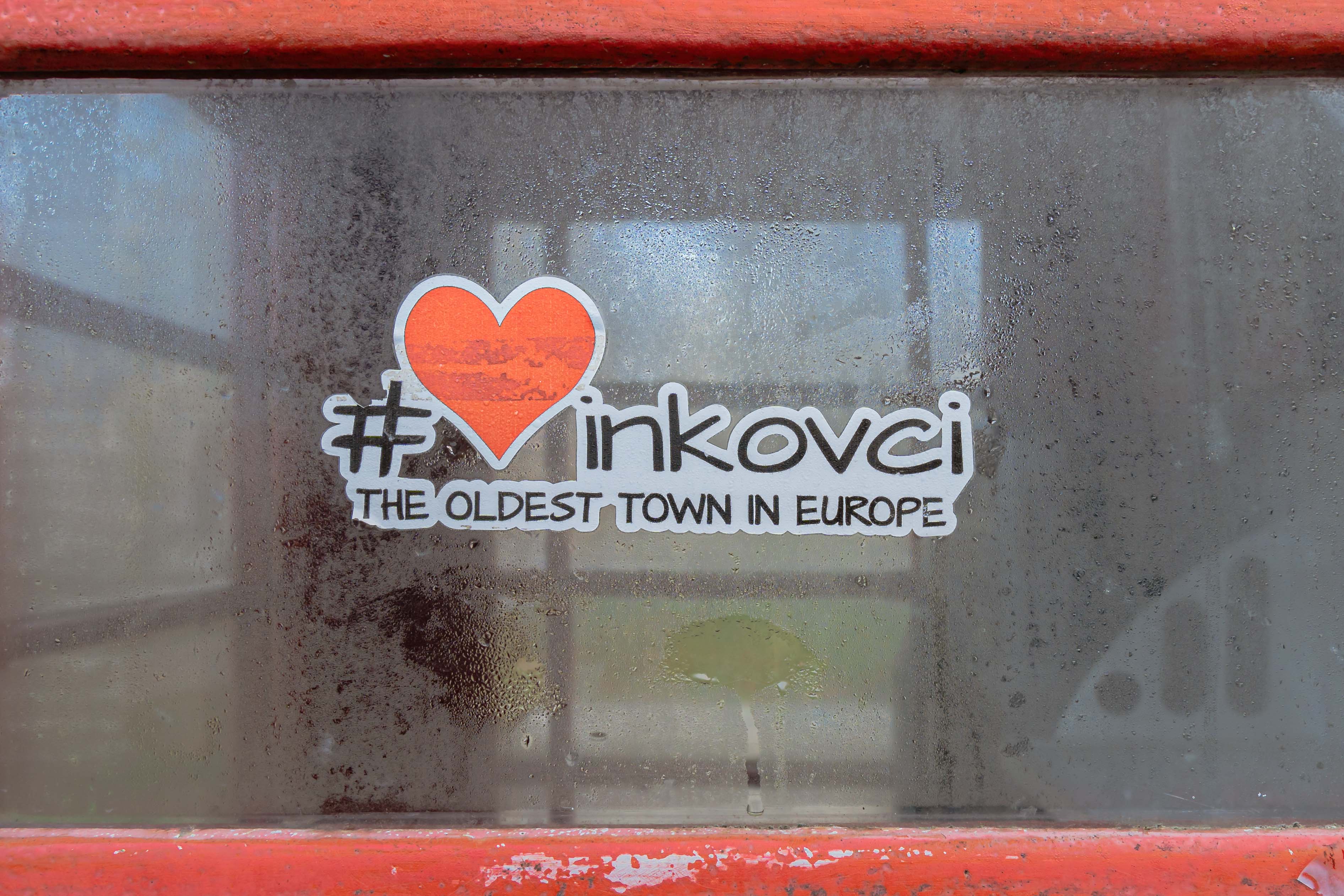Vucedol Culture Museum Hosts First International Conference
December 9, 2022 - A two-day international scientific conference titled Vucedol/Culture: Origin and Heritage is currently underway at the Vucedol Culture Museum in Vukovar. The primary goal of this first scientific conference is to present the results of twenty years (2001–2021) of systematic research at the prehistoric site of Vucedol, but also to remind about the history of research and evaluation of earlier research of the site and the Vucedol culture.
"We are proud to host this first international scientific conference, where we discuss what Vucedol culture was in the wider area. This is also an opportunity to thank all previous researchers, university professors, and those who researched Vucedol culture in Slovenia, Hungary, Serbia, Bosnia and Herzegovina, and Montenegro. To all the areas that surround us, which gave birth to the most significant findings from the Vucedol culture. This is an opportunity to summarise previous research, but also to present the latest research in the past ten years on the location of the Streim corn field," - said the director of the Museum of Vučedol Culture, Mirela Hutinec, for HRV.
Danijela Roksandic Vukadin from the Department of Archeology of the Faculty of Philosophy of the University of Zagreb added that she would present a significant find, a tomb in which the remains of 30 people were discovered. "So far, only twenty graves have been found in the entire area, and we found thirty bodies in one tomb," pointed out Roksandic Vukadin, reminding that Vucedol has been investigated for almost 150 years.
Steve Tsentserensky
Pyramids were influenced by the Vucedol culture.
Because Vucedol culture represents one of the highest reaches of technological, social, and spiritual development of prehistoric communities on Croatian soil, the conference will cover a wide range of topics. It will include various issues related to the intensive development of metallurgy as a highly accumulative activity and its influence on shaping the material and spiritual aspect of the Vucedol communities, the high standard of ceramic production and pyro technology, the organisation and architectural design of the settlement, the complex element of religious life, problems of chronology and bioarchaeological and other topics.
"The Vucedol culture was the highest level of European civilisation 5,000 years ago. Research has proven that the culture of Vucedol is older than Egyptian, Mesopotamian, and Greek, that they had some knowledge and reach that was extended to other regions, and not the other way around as previously thought. For example, the three Egyptian pyramids were placed to correspond to the constellation of Orion's Belt, and in the Vucedol culture, Orion was mentioned 300 years before the construction of the pyramids. This proves what our Vucedol culture is; therefore, we must show the world what we have and where it all started, " stressed Professor Aleksandar Durman. He addressed young researchers, saying that only about 10% of the localities in Vucedol have been explored and that they should continue with excavations and research as well as developing cultural tourism to present Vucedol's culture to the world.
Steve Tsentserensky
The director of the Vukovar City Museum, Ruža Marić, recalled all the activities they carried out related to the creation of the Vučedol Culture Museum. "It was a dream of professor Durman, me, and professor's fellow archaeologists, which we managed to realise."
The head of the Conservation Department of the Ministry of Culture and Media in Vukovar, Zdenka Predrijevac, recalled that the ministry had invested significant funds in the construction of the Vučedol Culture Museum and archeological research.
"The program was implemented from 2005 to 2015 and was financed by the Development Bank of the Council of Europe and the Government of the Republic of Croatia in the amount of HRK 70 million, while the permanent exhibition of the Museum was financed with HRK 15 million. The construction of the archeological park Vučedol continues, with HRK 118 million secured for that project, and it should be completed within the next two years", said Predrijevac.
The conference was organised by the Department of Archeology of the Faculty of Philosophy of the University of Zagreb, the Vučedol Culture Museum, and the Vukovar Municipal Museum, with the support of the City of Vukovar.
"The city of Vukovar believes in the potential of the Vucedol culture and its influence on the development of Europe and the whole world. Therefore, we need to use this potential and put Vucedol on the tourist map of the world", said the deputy mayor of Vukovar, Filip Sušac, adding that proof of all this is the numerous recognitions that the Museum received, as well as this conference.
For more, make sure to check out our dedicated Lifestyle section.
2000 Years Old Roman Ship Discovered off the Coast of Sukosan near Zadar
November 5, 2022 - For more than two thousand years, at a depth of two meters, covered in sand, a Roman ship lay untouched in the sea near Sukosan.
Zadarski reports that although it has long been speculated that the seabed of the ancient harbor at the Barbir site has been hiding many riches, the Zadar river archeologists only recently, after six years of systematic research, came to a great discovery: a Roman ship from the 1st century emerged from under the layers of sand! It is about three meters wide, while nine meters of its length have been discovered so far. Apart from the parts that were eaten by shipworm, the rest of the ship is in incredibly good condition thanks to the fact that the wood itself has been preserved in the sand for two millennia.
"The ancient port of Barbir was discovered in 1973 and for a long time was documented only superficially, thanks to the research of Boris Ilakovec. Only in 2017 did new, more serious work begin in that area, in parallel with the research of the Roman villa on the mainland, which was largely destroyed due to modern construction. Fortunately, part of the site under the sea has been well preserved", reveals Mladen Pešić, the leader of this research and the director of the International Centre for Underwater Archaeology. In the last six years, for as long as the research under the sea has lasted, the centre has cooperated with the German Archaeological Institute, but also with other partners such as Oxford, the University of Zadar, the Archaeological Museum...
First, they investigated the structure of the Roman pier, which was built in two phases. The first one dates from the 1st century AD when the port was smaller. This is evidenced by numerous finds of ceramic vessels and amphorae, oil lamps and fragments of glass that came to Sukosan from different parts of the Mediterranean - from the area of present-day Greece, Turkey, the Middle East and Italy - on the routes of maritime trade links. A major expansion took place in the middle of the 4th century, when the present-day shape of the tongue was formed, which is still there, despite the long exposure to the sea. Evidence of intensive trade during that time is also shown by finds from North Africa. Among the finds from that period, thirty bronze coins stand out, minted during the reign of the emperors Constantine II, Constans and Constantius II, which were found in a layer 150 centimeters below the level of the present-day seabed. It was during these investigations that the archaeologists found a piece of wood, a board with a metal nail, which particularly intrigued them the year before last.
"We were hoping that there could be a ship next to that board. That's why last year we opened the first four squares, each with an area of four square metres, and started researching at that location. And indeed, there was a Roman ship there that we dated to the end of the 1st or the very beginning of the 2nd century, i.e. following to the first phase of the port. This year, the research continued, again in cooperation with the German Archaeological Institute and the University of Zadar and archeology students. The team was not large, but it was very interesting" Pešić said for Zadarski.
For more, make sure to check out our dedicated Lifestyle section.
Meet the Croatian Indiana Jones - Prof. Dr. Sc. Aleksandar Durman
October 20, 2022 – So there are places in Croatia where people have continuously lived for 8000 years. And there was a civilisation on the bank of the Danube 5000 years ago that knew the stars, seasons, and how much a standard door frame would measure today. Oh, and they drank beer. The fact that we know that and so much more we owe Professor Aleksandar Durman, the living legend of Croatian archaeology. We had the honour to meet the man himself and sit down with him for an hour of conversation, which included practical demonstrations of why the moon wasn’t a practical tool for the Vučedol people, a few trips down memory lane, and a discussion on the future of tourism in the Croatian east.

The man in action, Vučedol Culture Museum
Let us properly introduce the lively professor. He was born in 1949 in Zagreb, where he lived a happy childhood and studied archaeology and history. Asked about his interest in these areas, professor Durman says that archaeology came as a sort of plan B after he realised that he wasn’t that interested in physics which he initially planned to study. Archaeology seemed exciting and interesting, he adds, but since job prospects were scarce in the field, he decided to study history along with it. During his studies, though, he ensured that he was employed in archaeology and never looked back. When he was a student in the seventies, almost all the research was concentrated on the Croatian coast and the remnants of the Roman era that kept popping up there. Fair enough, he comments, but there was and is much more to discover in other parts of Croatia, primarily the east.
Steve Tsentserensky
And he went on to do just that. In his consolidated CV, there is a page just about his research projects in Vukovar and Vinkovci, where he started working in 1977 and kept coming back until his recent retirement. He received multiple awards for his contribution, including the Vinkovci Gold Plaque (2011), the Lifetime Achievement Award of the Croatian Archaeological Society (2013), and the title of an Honorary Citizen of Vukovar (2020).
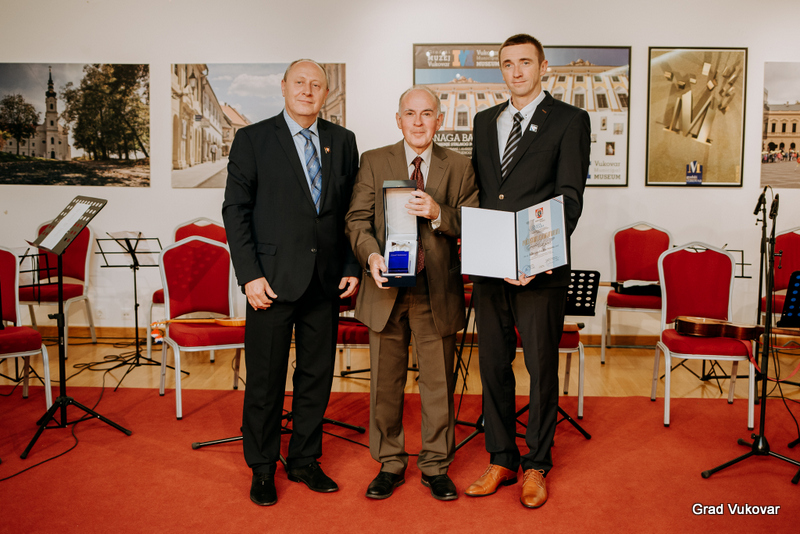
City of Vukovar
If you've heard anything about the Vučedol culture and the museum, it was probably about the famous bird. This ceramic dish was discovered there in 1938 and became a symbol of Vučedol and Vukovar. We mean, of course, the Vučedol dove that was later reclassified as the Vučedol partridge. Professor Durman changed its “name,” providing an excellent explanation. Without revealing it, we’ll say that it has to do with social hierarchy, the nature of the job, and what partridges do when they sense danger. You can see the original in The Archaeological Museum in Zagreb, but the Vučedol museum in Vukovar will provide all the context and insight to help you understand why an ancient civilisation, the contemporaries of Egypt and Mesopotamia decided to settle just there. At the risk of repeating ourselves, if you head east, make sure to visit this stunning location.

Back to our main character. An article about the professor wouldn't be complete unless we mentioned, possibly, his most significant discovery. That would be the Orion calendar which he discovered on the 21st of March in 1978. Fate, he says, having found it on the first day of spring. The little ceramic dish in question, according to professor Durman's interpretation, is one of the most significant witnesses of just how advanced the Vučedol civilisation was. The carved pattern on the dish apparently represents the night sky, with the four horizontal fields most likely dividing it into the four seasons.
The Orion calendar, Steve Tsentserensky
The incrustations inside the fields represent the constellations visible in the area in 2600 BC. The most important one, you might have guessed, was the Orion. It was the dominant winter constellation, and it was reliable – when the three stars of Orion's belt would fall below the horizon, the Vučedol people knew spring was there. And since they largely relied on their crops for sustenance, the first day of spring also signified the start of a new year and new life. The stars played a significant role in the daily lives of the Vučedolians as well as their spirituality. The Orion dish was found in a locality near Vinkovci and has become the symbol of that city.

Orion calendar mozaic in Vinkovci city centre, Steve Tsentserensky
Speaking of, it is Vinkovci that takes another special place in our article and the books of Croatian archaeological research. You might have heard something about it being the oldest city in Europe, but that, we dare say, is an understatement. Professor Durman found evidence supporting the thesis that the area of Vinkovci has continuously been inhabited for over 8000 years. Fun fact, not one but two Roman emperors were born in Vinkovci – Valentinian and Valens, whose name is now synonymous with some excellent craft beer.
Steve Tsentserensky
To put all of this in context, let us quote the professor himself when asked how we should present his findings and demonstrate the importance of these areas to both those who live here and those who visit. “The Vučedol culture was the highest level of Indo-Europeans at the very beginning. They had a calendar; they knew metallurgy, and even the measurements for door frames that we still use today came from there. They had a pictorial writing system before the hieroglyphics. Just consider that all we know about Greek mythology had its roots in the Vučedol culture”. Now tell us that is not fascinating.
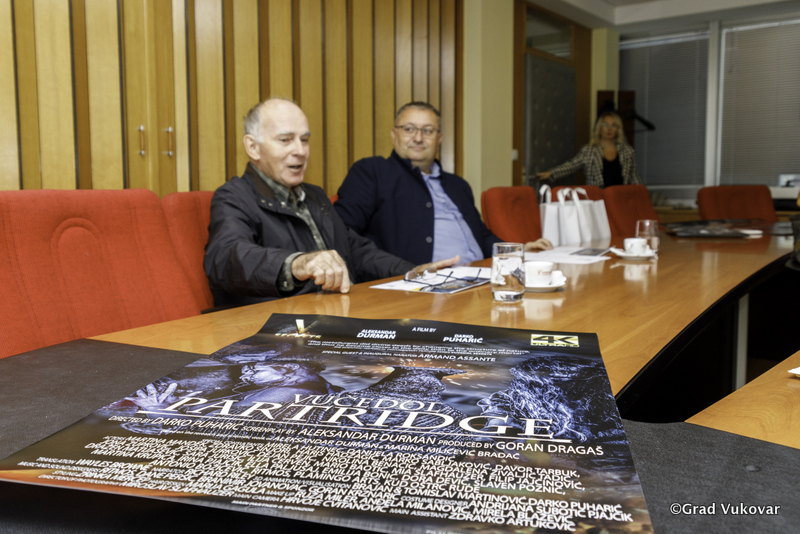
City of Vukovar
Finally, let us thank professor Durman for a unique, educational evening and his contribution to archaeology in Croatia, but especially in the east of the country. He has worked tirelessly to find, study and explain so much of what we know about the area today, and he has also travelled the world promoting it and emphasizing its importance. Among other things, he was a screenwriter for the Vučedol Secrets film, with its third part coming out soon. Naturally, we also asked him about the future of tourism in Slavonia, and we were happy to hear that he shared our view – the area is still a hidden gem, but its time will come. Archaeology and archaeological tourism will play a key role.
For more, make sure to check out our dedicated Lifestyle section.
New, Fourth Mammoth Tooth Found in Mohovo near Ilok
August 2, 2022 – Maybe you have never heard of Mohovo, and maybe you know that they keep finding mammoth teeth there... There is really no in-between. A new, fourth mammoth tooth was found on Saturday, 30th July.
As SiB reports, ten years after he found the first mammoth tooth in his village, Goran Popović from Mohovo found another, fourth, mammoth tooth on Saturday.
He informed his friends and the public about the phenomenal discovery by posting on Facebook, stating that he was filled with happiness, emotions, and optimism.
"I had that instinct again, walked through our beautiful village, and then it happened – the fourth mammoth tooth. All of a sudden, a part of the hill collapsed and the tooth just popped out. Now I'm completely convinced that this is no longer a coincidence", he wrote and invited everyone to join in and help, because a lot of support is needed to start the systematic search of the location.
SiB spoke about this discovery with Goran, who, still under a strong impression, said that not a single find was the result of purposeful digging and searching, but that he found each tooth completely by accident.
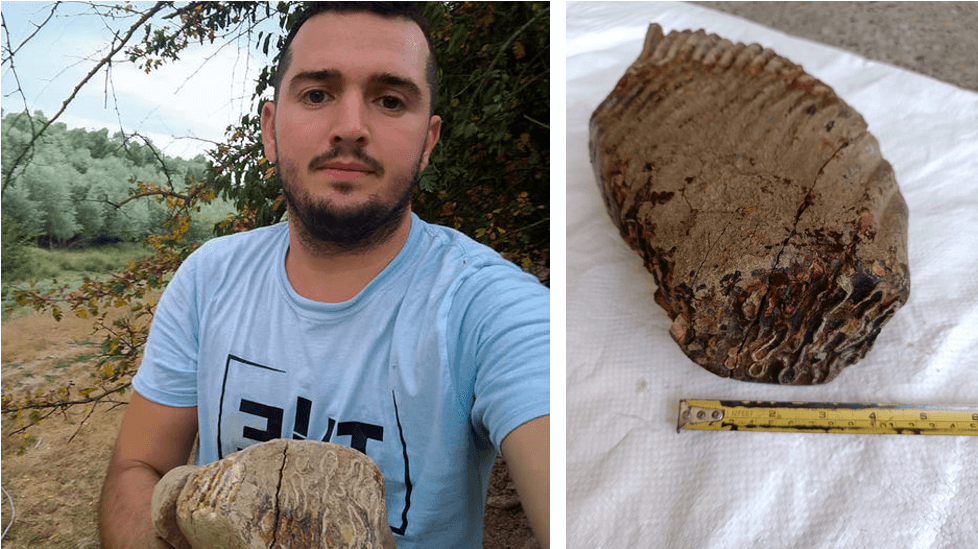
Photos by Dolina Mamuta
“Last year, the Minister of Culture, Nina Obuljen Koržinek, visited the site of the discovery, the county and city authorities came, and we received promises from all of them that they would do everything in their power to start archaeological research. I know that the activities in the wider Vukovar area focus on Vučedol, but I believe that the finding of another tooth will motivate the authorities to pay attention to Mohovo as well. It would be an important step in the promotion of our small village and it would certainly make it more attractive not only in terms of archeology but also in terms of culture and tourism”, said Popović.
The relevant ministry and the Ilok City Museum were immediately informed about the discovery, as well as the City of Ilok, and the Vukovar-Srijem County. He emphasized that this place with only two hundred inhabitants obviously hides great secrets that experts need to investigate. It all started in the fall of 2012 when, while digging a septic tank in an orchard, he found the first fossil remains of a woolly mammoth, and a discovery was made four years later in another location. Goran states that short research, in addition to the woolly mammoth and the woolly rhinoceros, led to the discovery of fossil remains of a hyena, a wild horse, and a bison. Four years after the second discovery, there was a third one, when the fossil remains of a mammoth were found again near the village pond. Realizing the potential hidden in their village, several young residents of Mohovo founded the association Dolina Mamuta (Mammoth Valley). They organised workshops, installed a straw sculpture of a woolly mammoth, a woolly rhinoceros, and a hyena in the village centre, and launched the events "Advent in Mohovo" and "Mammothfest", the second edition of which is planned for this October.
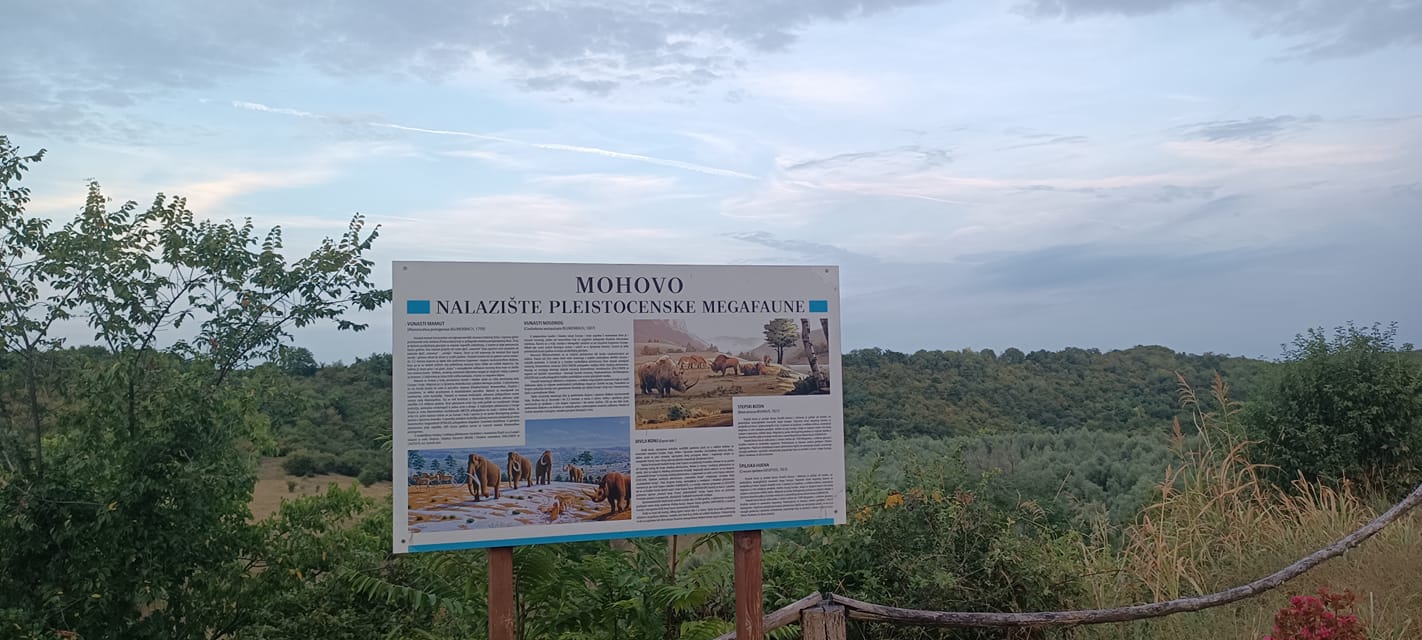
Photo by Dolina Mamuta
“The creation of a sculpture made of solid material is nearing completion, for which we were provided funds through donations after the straw sculpture was destroyed in a fire.
For the second "Mammothfest", we plan to organize an exhibition about the findings so far and additionally motivate the authorities for systematic research” he stated.
For more, check out our lifestyle section.
4th Century Coins Found on Ugljan Island
February 18th, 2022 - Archaeological research was conducted on St. Michael's fortress on Ugljan island, which is set to become a tourist attraction dedicated to the cultural heritage of all Zadar islands
Archaeological research has been underway at St. Michael's fortress on Ugljan island for several years now. During the third excavation campaign, archaeologists found modern, medieval and late antique coins, as well as 14 fragments of stone sculpture.
As reported by Naši Školji, a small amount of archaeological material was collected, mostly ceramics, which will be stored at the Archaeological Museum in Zadar after preliminary processing and analysis.
Research was conducted by the company Arheolog d.o.o. from November 3rd to December 8th, 2021. Archaeologist Damir Martinov, head of the company that carried out the work, explained that the recent research provided valuable insight into the stratigraphy and chronology of the embankment on the south-west side of the fortress, which once used to house the church of St. Michael.
‘Several layers of the embankment have been documented, dating to different periods. The two upper layers of the embankment were formed during the 20th century, as evidenced by the remnants of various materials from recent history. The thick upper embankment on the southern side, made of stone and soil, was consolidated by a dry stone wall, and was made by demolishing the ruinous Romanesque-Gothic church of St. Michael after World War II. Inside the embankment, thirteen stone artefacts from the church were found (fragments of pillars, lintels, capitals, consoles, arch openings, etc.). The lower, thinner embankment layer probably formed during the first half of the 20th century’, explained Martinov.
One of the embankment layers dates to the early modern era, i.e. between the 16th and the 18th centuries. Three layers date to late middle ages; a silver Venetian coin was found in one of the layers, minted for the Doge of Venice Andrea Dandolo (1343-1354).
In another late medieval layer, researchers discovered late antique coins dating to the first half of the 4th century - a significant find that points to activity on the site in late antiquity.
A captain's house dating to the 1400s was also discovered at the fortress during an earlier research campaign.
‘Archaeological research was conducted as part of the reconstruction and revitalization of St. Michael's fortress, which is a protected cultural asset of the Republic of Croatia and is supposed to contribute to the sustainable economic development of Ugljan and Pašman islands, as well as development of cultural and active tourism. A project for the reconstruction of the fortress will be developed based on the results of the archaeological research. So far, a geodetic study and geodetic survey, a conservation study and an architectural survey of the fortress have been completed’, said Preko Mayor.
There are big plans for the fortress of St. Michael, which is supposed to become a so-called Castle of Island Stories, an interpretation center that will introduce visitors to the heritage of all Zadar islands.
Research was conducted by archaeologists Damir Martinov, Domagoj Maurin and Dominik Kelava of the company Arheolog, in collaboration with archaeology students Pio Domines Peter, Domagoj Knez, Luka Žarković, Eugen Fritz Prgomet and Leona Valenta. The experts were assisted by four workers from Ugljan.
Croatia-Slovakia Scientific Cooperation: Conference in Zadar Continues Academic Friendship
June 30, 2021 - In 2019, an agreement was reached on the start of the Croatia-Slovakia scientific cooperation. The June 18 conference held at the University of Zadar presented the current progress in that agreement.
Along with countries such as Serbia, Slovenia, and Northern Macedonia, Croatia is a south Slavic country. The former Socialistic Federation of Yugoslavia got its name because of southern Slavs, a branch of Slavs, ethnolinguistic groups that arrived in Europe along with many other groups in what history remembers as the „Migration Period“, when Europe was dominated by the Western Roman Empire.
Other Slavic countries include Russia, Poland, Bulgaria (also south-slave, but not part of Yugoslavia), Czech Republic, Ukraine, Belarus, and also West Slavic country, Slovakia.
Sharing ethical and cultural heritage and diplomatic relations (formed on March 1, 1993), saw the intellectual cooperation with Slovakia raised on a high level and produced so much material, it required an entire scientific conference.
As reported by Ivo Pilar Social Research website, June 18 saw Zadar University host a conference „Intellectual relations of Croatia and Slovakia“, prepared by Slovakian-Croatian Board for Humanistic Sciences lead b professor Martin Homza from Comenius University in Bratislava and Ivo pilar Social Research Institute headmaster dr. Željko Holjevac.
The conference was supposed to be held last year but was canceled due to coronavirus, and the 2021 edition was managed in a hybrid model of the event, mixing live and online ways for participants to meet. Twelve Slovakian and Croatian scientists reported on the theme, and key Slovakian and Croatian players on the subjects of education attended and made speeches at the opening ceremony. This includes professor Zvjezdan Penezić, Zadar University's vice-chancellor. Peter Susko, Slovakian Ambassador in Croatia, Marián Zouhar, dean of the Bratislava's Faculty of Humanities and Social Sciences, Staša Skenžić from Croatian Ministry of Science and Education, as well as Martina Klofáčova from the Slovakian Ministry of Science and Education.
„Slovakian-Croatian Board for Humanity Sciences is active since 2019 as part of the program of collaboration between two ministries for science and education with the goal of developing bilateral scientific and educating activities in the field of history, linguistics, Latinism, art history, ethnology, and archaeology“, informed Ivo Pilar Social Research Institute about the program goals.
Is there a Croatian diaspora in Slovakia? Yes. You can learn more about the Croatian diaspora on our TC page.
For more about science in Croatia, follow TCN's dedicated page.
European Archaeology Days (EAD) at Archaeological Museum Zagreb from June 18-20
May 14, 2021 -The European Archaeology Days (EAD) at the Archaeological Museum Zagreb, held on June 18-20 and organised by the French Culture Ministry, and the French National Institute for Preventive Archaeological Research (INRAP), brings all things archaeological to the Croatian capital.
The heavy blow of the 2020 Zagreb earthquake affected the Archaeological Museum Zagreb, as did the one back in 1880. However, as the Museum continued to stand the test of time past the 19th-century tragedy, it's great to see that it resisted last year's troubles as well. Not only is it open, but it will also host European Archaeology Days (EAD) for 2021 from June 18-20.
As the Museum's official website informs its readers, the goal of the manifestation is to popularise and present archaeology as a science, and the rich programme will include workshops, lectures, exhibitions, presentations of publications and projects, as well as expert guides, virtual content, and many other types of activities.
Archaeological departments of the highest educational institutions from Zagreb, Pula, Zadar as well as the Croatian Archaeological Society, the Croatian Archaeological Institute, Institute for underwater archaeology in Zadar, Kaptol county, and museums from Zadar, Sisak, Vinkovci, and Rijeka that are dedicated to the field of archaeology and history, are all partners of the event.
The organisers of this spectacle for anyone curious about mankind's past are the Culture Ministry of the French Republic and the French National Institute for Preventive Archaeological Research (INRAP).
As a non-profit Organisation on Archaeological Open-Air Museums, Experimental Archaeology, Ancient Technology and Interpretation, EXARC reports on its website that EAD was established in France back in 2008 and coordinated by INRAP (The National Institute for Preventive Archaeological Research), as a national event, but in 2019, the manifestation of this event opened up on a larger, European scale. Today, the EAD aspires to become a European concept that benefits the general public, museums, and culture.
Young as an international manifestation, it managed to be organised in 2020, but of course, under specific circumstances and with respect to all of the epidemiological measures. It was different but successful thanks to the 1,000 initiatives and 28 European countries taking part last year, all of them adapting to the virtual activities over physical ones.
''The EAD is a long weekend dedicated to archaeology in all its forms. We raise awareness and familiarise European audiences with all aspects of archaeology. A variety of events will be organised, aiming at engaging families, schools, students, history enthusiasts, museum visitors, as well as merely curious participants to discover this multifaceted discipline and their archaeological heritage.
Despite the challenging times that Europe is going through on several levels, there are still things that bring us together. Looking for common ground, for cohesion and reciprocity, while all countries continue to preserve their cultural identity and diversity, European Archaeology Days aim at sharing archaeological heritage throughout Europe and make culture accessible to all“ elaborated Exarc, on its website. They add that INRAP welcomes everybody wanting to take part in the manifestation to join and further enrich the programme.
It might be worth nothing what the difference between history and archaeology actually is. History focuses on written sources, while archaeology focuses on physical ones, such as items, but they both explore the past. For those wanting to learn more about how we as humankind progressed to the stage where we are at today, they can find joy in informing themselves about these respective fields.
Speaking of the old, the historical, and of course the physical, there are very many interesting sites across Croatia protected by UNESCO. Learn more on our TC page.
For more about science in Croatia, follow TCN's dedicated page.
Croatian Archaeologists Remove WWII Engine from Seabed Near Zadar
October the 25th, 2020 - Croatia is full of history, and Croatian archaeologists are often coming across incredible examples and historical artefacts dotted up and down the coast, with the sea around Zadar often bearing fruit when it comes to modern history - particularly the Second World War.
As Morski writes, after finding a WWII engine on the seabed near Rivanj, Croatian archaeologists from the International Centre for Underwater Archeology in Zadar consulted aviation history experts Radovan Zivanovic Raus and Jurica Vucetic, who confirmed that this was indeed a very important find. Namely, it is a twelve-cylinder Rolls Royce Merlin engine, which, in addition to the famous Spitfire aircraft, was also installed in Hurricane aircraft.
Given that parts of the three propellers have been preserved on the engine, this is obviously a Hurricane. Historians believe that this is an aircraft that crashed in the Croatian Adriatic at some point during September 1944, but further research must confirm this thesis. They also expressed fears that this engine could be stolen by self-proclaimed underwater researchers and unscrupulous collectors and even smuggled outside of Croatian borders.
On Thursday, October the 22nd, 2020, Croatian archaeologists from MCPA Zadar, Roko Suric, Maja Kaleb and Luka Bekic, with the help of Djani Iglic from the Sveti Roko Bibinje diving club, successfully lifted the engine out of the sea with an underwater parachute and towed it to land, more specifically to the port of Rivanj. There, it was lifted by a truck crane and transferred to the City of Zadar. On Friday morning, it was successfully transported to the restoration workshop MCPA Zadar. There, it was taken over by the workshop leader Antonija Jozic, who will determine the strategy of how to best conserve the find.
We all hope that the restoration will go smoothly, so that this valuable engine, the only one to have been preserved in Croatia, will be deservedly exhibited at Sv. Nikola in Zadar, the future presentation centre of underwater archeology of MCPA Zadar.
For the latest travel info, bookmark our main travel info article, which is updated daily.
Read the Croatian Travel Update in your language - now available in 24 languages
Zadar Museum Exhibits Roman Superstitions — And Lucky Penises
July 17, 2018 — If you’ve started off on the wrong foot, grab tight to your phallic amulet.
This will only make sense if you are an ancient Roman.
Or if you visit Zadar’s Archeological Museum this summer.
2000 Year Old Amphorae Discovered in River Neretva
The river Neretva has been hiding some precious objects for two millennia


